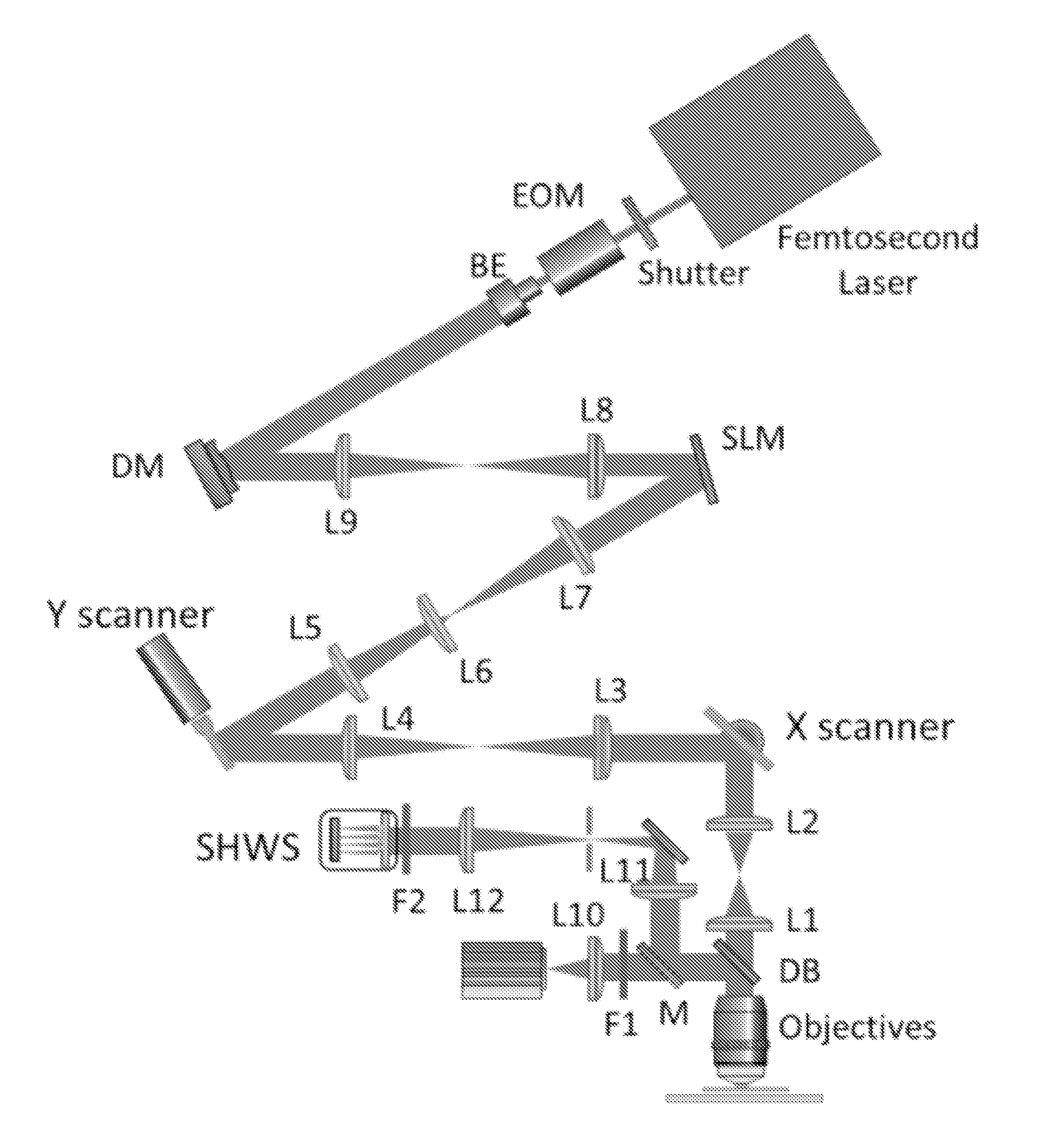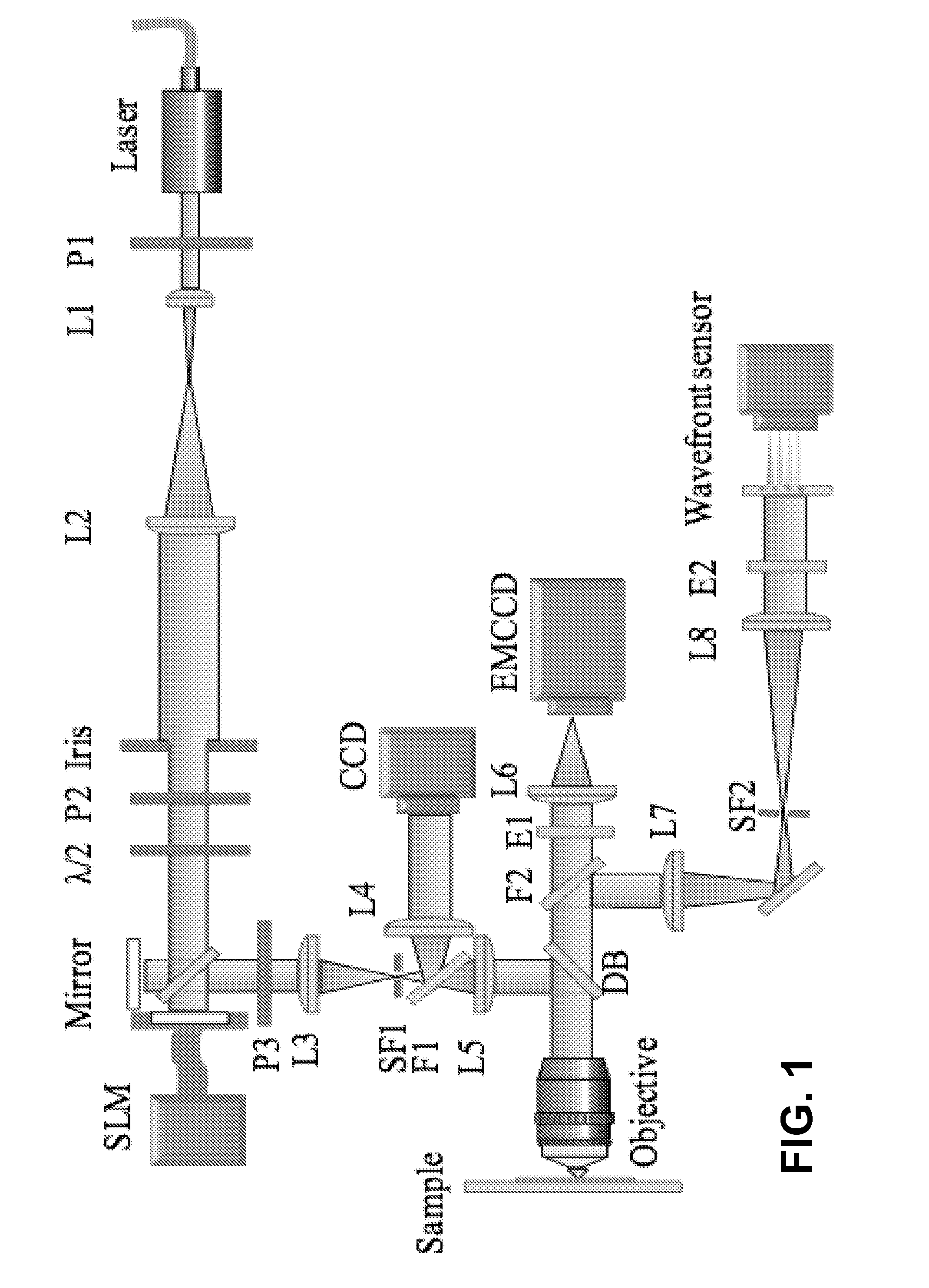Interferometric focusing of guide-stars for direct wavefront sensing
a direct wavefront and guide star technology, applied in the field of noninvasive imaging of biological tissues, can solve the problems of limiting the resolution, and achieve the effects of reducing the signal to noise ratio of the wavefront measurement, limiting the resolution, and reducing the penetration depth
- Summary
- Abstract
- Description
- Claims
- Application Information
AI Technical Summary
Benefits of technology
Problems solved by technology
Method used
Image
Examples
Embodiment Construction
Section 1
[0014]To correct the refractive aberration, Adaptive Optics (AO) with different strategies has been applied in optical microscopes. The indirect wavefront sensing method was first applied in an AO system to retrieve the optimal phase by maximizing the detected signal from samples. Numerous iterations are required to find the wavefront, causing photobleaching, while limiting the bandwidth of imaging.
[0015]The direct wavefront sensing method applies a Shack-Hartmann wavefront sensor (SHWS) or interferometer to measure the wavefront directly using the light from a fluorescent microsphere, fluorescent proteins, or backscattered light from the samples. Other approaches use a direct wavefront measurement based on sequential measurements of the wavefront error in each segment of the aperture, or sequential intensity measurements with different trial aberrations.
[0016]In the above methods, the performance relies heavily on the intensity of the ballistic light from the samples. In b...
PUM
 Login to View More
Login to View More Abstract
Description
Claims
Application Information
 Login to View More
Login to View More - R&D
- Intellectual Property
- Life Sciences
- Materials
- Tech Scout
- Unparalleled Data Quality
- Higher Quality Content
- 60% Fewer Hallucinations
Browse by: Latest US Patents, China's latest patents, Technical Efficacy Thesaurus, Application Domain, Technology Topic, Popular Technical Reports.
© 2025 PatSnap. All rights reserved.Legal|Privacy policy|Modern Slavery Act Transparency Statement|Sitemap|About US| Contact US: help@patsnap.com



